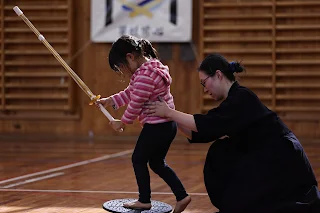My first step on the path of the sword
I first encountered Kendo 剣道 about four months ago at a friends invite to come and see. And since then I’ve been going to the Waikato Kendo Club dojo to train as well as doing daily suburi 素振り at home and had recently passed my first grading. To my surprise Kendo has not only helped to train my body but has opened up a whole new perspective for me on life in general.
I’ve always been fascinated by modern Japanese budo, and the philosophy behind them to follow a given path or way. Kendo - The way of the sword, is an excellent representation of it.Just like how good handmade swords are forged with care, patience and sweat from fire and hammer, the same can be said about Kendo.
It is a way to discipline and shape our character through vigorous practice and training to become a better person that we can be proud of.
And through time it helps to mold the mind and body, and cultivate a vigorous spirit, allowing us to gradually hone the skills to fight against our own internal enemy - ego, self doubt, anxiety and depression.
Kendo teaches us to hold in esteem courtesy and honour and associate with others with sincerity by respecting each other, opponents, practice partners and our Sensei and Senpais. Being thankful for each other as we continue to train on this journey together.
And to forever pursue the cultivation of oneself by continuing to learn and strive for self improvement, learn from mistakes and be humble of your successes.
It was truely a wake up call and reminder to myself that no one can be perfect in this world even myself. And I had to stop this vicious cycle of negativity, excuses, self blame and wrong priorities.
I have been struggling with anxiety, depression, and work burnout for several years affecting my health in general. Even though my Christian faith has always helped to keep me going, but I had always felt a void in my life that I couldn’t fill.
Since I started learning kendo, I felt like the void is slowly but surely getting filled. Not only I have a new goal in life - to keep improving myself both physically and mentally, I’m also blessed to have made so many new friends and kind people like Sensei and Senpais, even cute little kendokas who have all inspired and encouraged me to face my fears and life’s challenges face on and never give up.
I can finally feel a sense of peace and renewal as I slowly cut away my lingering fears and doubts from past disappointments and failures.
God may have closed one door but opened another for me.
Through Kendo, I’m given a new lease of life. I’m able to regain some lost self-esteem and confidence and can finally start to love myself and life once more.
I can appreciate those around me even more, and feel Gods love through them once again.
I feel truly grateful to have found Kendo and I look forward to go on this lifelong journey with all my other fellow kendokas 
とても感謝する
Thank you 






Comments